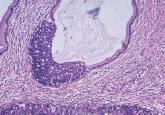Use of Pap smears and mammography has slowly but steadily declined since both peaked in the year 2000, according to the National Center for Health Statistics.
The age-adjusted rate of women aged 18 years and over who reported having had a Pap smear in the past 3 years dropped from 81.3% in 2000 to 70.2% in 2015. Over that same time period, the age-adjusted rate of women aged 40 years and over who had a mammogram over the previous 2 years declined from 70.4% in 2000 to 64% in 2015, the NCHS reported in “Health, United States, 2016.”
The declines in Pap smear use occurred among all age groups, dropping from 84.9% in 2000 to 76.1% in 2015 for those aged 18-44 years and from 84.6% to 75.5% among 45- to 64-year-olds, with the same pattern seen in all of the narrower age subsegments. Rates also were down in all races, with the largest drop occurring in American Indian/Alaska natives – 76.8% to 60.9% – and the smallest – 66.4% to 64.9% – in Asian women, data from the National Health Interview Survey show.The pattern for mammography use, however, was somewhat different. Declines in use were consistent by age group, but not by race. White women were less likely to get a mammogram in 2015 (65.3%), compared with 2000 (71.4%), while Hispanic women experienced a small drop from 61.2% to 60.9%, but black, American Indian/Alaska Native, and Asian women all increased their use of mammography over that time period, the NCHS reported.
rfranki@frontlinemedcom.com
